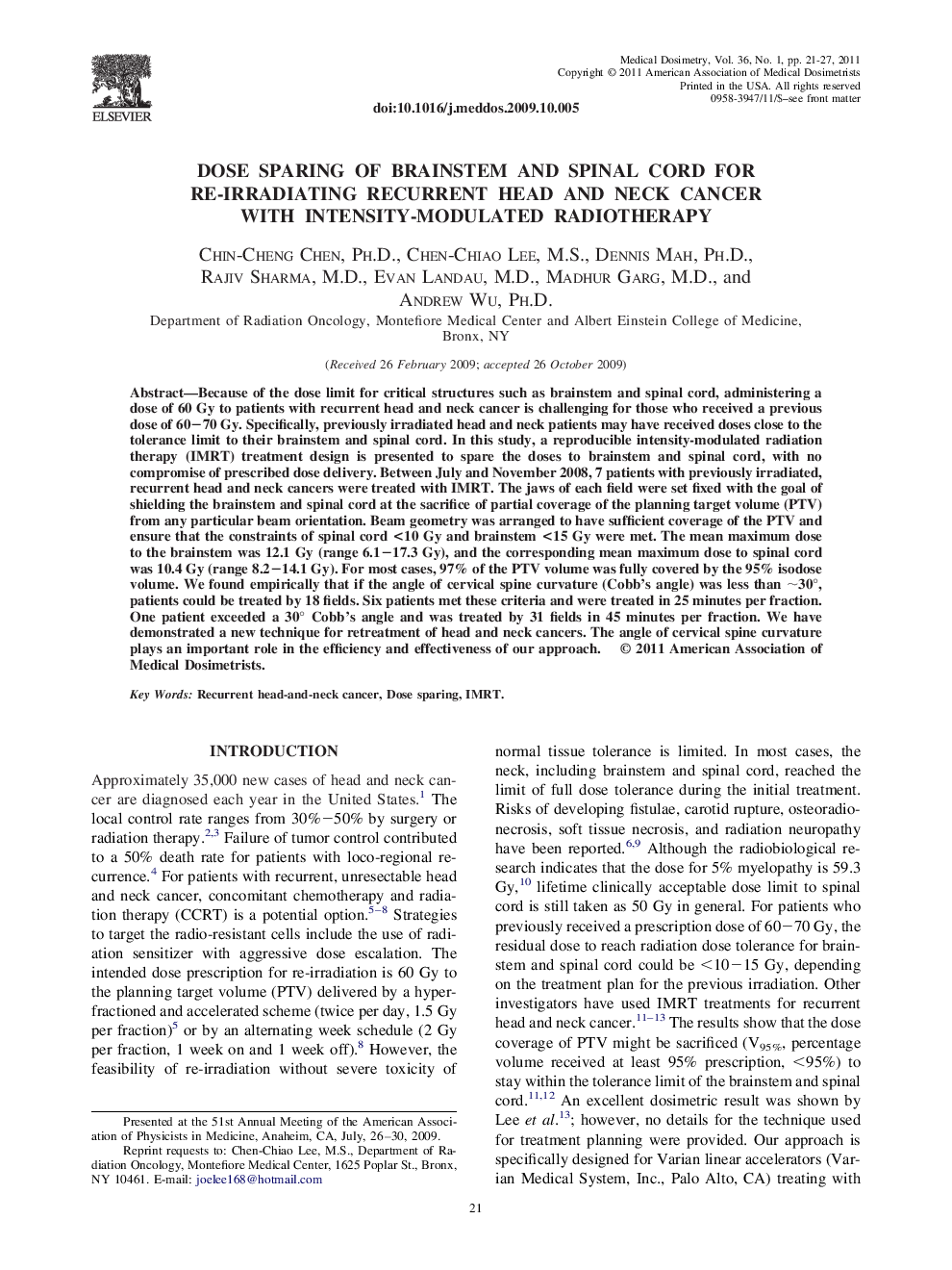| Article ID | Journal | Published Year | Pages | File Type |
|---|---|---|---|---|
| 1880015 | Medical Dosimetry | 2011 | 7 Pages |
Abstract
Because of the dose limit for critical structures such as brainstem and spinal cord, administering a dose of 60 Gy to patients with recurrent head and neck cancer is challenging for those who received a previous dose of 60â70 Gy. Specifically, previously irradiated head and neck patients may have received doses close to the tolerance limit to their brainstem and spinal cord. In this study, a reproducible intensity-modulated radiation therapy (IMRT) treatment design is presented to spare the doses to brainstem and spinal cord, with no compromise of prescribed dose delivery. Between July and November 2008, 7 patients with previously irradiated, recurrent head and neck cancers were treated with IMRT. The jaws of each field were set fixed with the goal of shielding the brainstem and spinal cord at the sacrifice of partial coverage of the planning target volume (PTV) from any particular beam orientation. Beam geometry was arranged to have sufficient coverage of the PTV and ensure that the constraints of spinal cord <10 Gy and brainstem <15 Gy were met. The mean maximum dose to the brainstem was 12.1 Gy (range 6.1â17.3 Gy), and the corresponding mean maximum dose to spinal cord was 10.4 Gy (range 8.2â14.1 Gy). For most cases, 97% of the PTV volume was fully covered by the 95% isodose volume. We found empirically that if the angle of cervical spine curvature (Cobb's angle) was less than â¼30°, patients could be treated by 18 fields. Six patients met these criteria and were treated in 25 minutes per fraction. One patient exceeded a 30° Cobb's angle and was treated by 31 fields in 45 minutes per fraction. We have demonstrated a new technique for retreatment of head and neck cancers. The angle of cervical spine curvature plays an important role in the efficiency and effectiveness of our approach.
Related Topics
Physical Sciences and Engineering
Physics and Astronomy
Radiation
Authors
Chin-Cheng Ph.D., Chen-Chiao M.S., Dennis Ph.D., Rajiv M.D., Evan M.D., Madhur M.D., Andrew Ph.D.,
